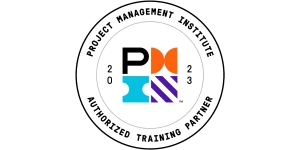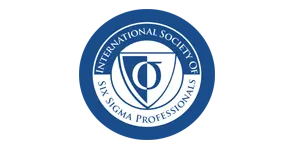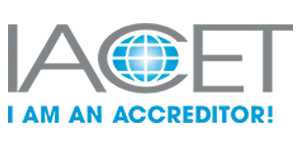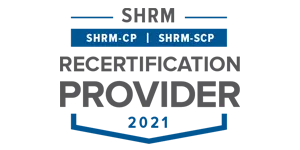Six Sigma for Healthcare Improves Patient Care and Reduces Costs
We have delivered programs to Healthcare service providers with great success from eight different locations across the US. From 2004-2006 one organization of Healthcare Belts closed a project with over 2 Million of Annual Savings.
3-Day Healthcare Jumpstart Rx©
6Sigma.us offers a very unique 3-day Jumpstart Rx© course that is tailored to the Healthcare environment. While much of the Lean Six Sigma methodologies are applicable to any process improvement program, there are certain unique qualities of the Healthcare environment that require a full understanding of what providers are currently facing. The complex nature of the service delivery and outcomes, supply chain, and reimbursement interactions necessitate a focused program.
This 3-day Six Sigma Healthcare course builds on the proven Lean Six Sigma training that has made 6Sigma.us a proven and highly sought after resource for many industries. The DMAIC program typically consists of the following topics, tools and techniques:
- Lean Six Sigma Introduction
- Lean Six Sigma Project Definition
- Project Selection Process
- Lean Six Sigma Deployment
- Process Mapping
- Input Prioritization Tools
- Failure Mode Effect Analysis
- Minitab 14.2 Introduction
- Measurement Systems
- Capability Analysis
- Sample Size Selection
- Statistical Process Control
- Process Control Plan
- Project Plan & Deliverable
- Project Reviews
- Homework
However, to make this Jumpstart Rx© course appealing to Healthcare providers, the content and case examples are customized for this distinctive audience. The group is allowed to select case examples that are of interest and applicable to THEIR class. Previous case studies have focused on the following:
 Bed Capacity Improvement
Bed Capacity Improvement
One of the most important resources in the hospital environment is the “bed.” This critical resource gets demands from just about every department in the hospital including surgery, the ER, and the ICU. If patients are not allowed to “flow” through these critical resources, the result is that every process feeding the beds become backed-up, which in turn reduces the amount of patient services that can be administered. The gridlock that arises strains all elements of the provider’s resources (people, time and money) and can impact directly the quality, timeliness, and effectiveness of the service. Such factors can be measured in terms of satisfaction or patient outcomes. By breaking down the overall delivery process into smaller, subsystem activities, the Lean Six Sigma practitioner can bring to the surface those areas that constrain the system during peak demand.
 Emergency Department Capacity Improvement
Emergency Department Capacity Improvement
One area that a hospital experiences unpredictable demand is that of Emergency Department (ED) arrivals. For a hospital, this is a major source of entry into the provider system that requires further demand on the services. It can also represent lost revenue if patients cannot be admitted and must be turned away. The goal for the hospital’s ED might include increasing patient throughput from the department into the subsequent care areas, increasing staff productivity, and ensuring all arriving patients can be serviced. The outcome for the patient is increased overall satisfaction.
 Other Improvement Areas
Other Improvement Areas
Other case studies have focused on other key areas of a hospital, including Cardiology Services, Supply Chain Optimization, Perioperative Services, and Intensive Care Units. Using the students’ input, one or several of the topics become part of the training material. Review the 6Sigma.us website for an example of actual projects and outcomes from previous students with the increased demands of the Healthcare provider, finding time to take off-site training is a difficult balancing act. 6Sigma.us understands this, which is why the 3-day Jumpstart Rx program was developed. Carefully linking the well established Lean Six Sigma techniques with the unique attributes of the Healthcare environment is “just what the Doctor ordered.”
Contact 6Sigma.us for further information.
If you are interested in the full Green Belt please feel free to join one of our full length Six Sigma Green Belt programs.
Project Examples from one of our Medical Laboratory Clients
| Belt |
Project(s) |
Dates of Completion* |
Cost Savings |
| Black |
Reducing Blood Wastage |
May-13 |
$213,290 |
| Black |
STAT Troponin |
Jun-13 |
$88,000 |
| Black |
NAT TAT |
Sep-13 |
$463,000 |
| Yellow |
MCHC Repeats |
Oct-13 |
$7,800 |
| Black |
Decreasing QA Occurrence Report TAT |
Jan-13 |
$23,000 |
| Black |
Improving donor collection errors |
Jan-13 |
$150,000 |
| Green |
Use Health Care Provider Number |
Jan-13 |
$78,000 |
| Green |
Reducing Confirmatory Testing TAT |
Jun-13 |
$22,000 |
| Black |
Anatomic Pathology Tracking System |
Jul-13 |
$273,600 |
| Green |
Reduction of Specimen Submission Errors |
Jul-13 |
|
| Green |
PAP SMEAR TAT |
Jul-13 |
|
| Black |
TAT for Quant HCG |
Jul-13 |
$30,000 |
| Black |
Reducing civilian platelet purchases |
Sep-13 |
|
| Black |
RAST Testing |
Oct-13 |
|
| Green |
Reduction of Commercial Reference Laboratory Costs/Contracts |
Oct-13 |
$200,000 |
| Black |
Reducing FFP Breakage |
Oct-13 |
$88,000 |
| Black |
Reducing Blood Contam Rate |
Dec-13 |
$55,000 |
| Green |
Supply Ordering Issues |
June-July 2005 |
$4,100 |
| Black |
Reducing TAT of Troponin Testing |
Jul-13 |
$88,000 |
| Black |
Decrease Red Blood Cell Purchases |
Aug-05 |
$300,000 |
| Green |
APTT Turn-around Time |
Dec-13 |
$50,000 |
Testimonial
“We are making excellent progress, $15 million total to date since projects began to go live in April-May 2001, projecting 14-15 million this year alone. Cultural transformation is occurring as the successes mount.”
Jeff Burnich Mount Carmel Health 







